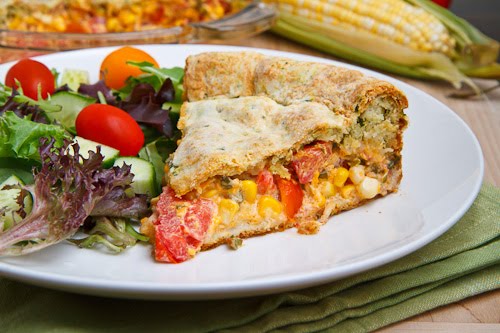Tomatoes are the gateway vegetable of the summer, the bell weather for when and how complete the summer season really is.
By their color alone, from pale green through salmon and onto deep red the tomato signals the warming of the days and the deepening of the season. And that is why I am totally confused and a little frustrated about this particular year, viewed through the tomato lens.
I started to get tomatoes over a month ago. Granted, they weren’t summer tomatoes, but with a little push here and there they were respectable, and they only got better. Dishes and salads I would have normally waited to roll out started showing up on special appetizers, and as part of the larger make-up of even some menu items.
I took it for granted that part of me just was too impatient to wait for summer so maybe if I served a tomato or two, summer would just acquiesce, but alas, that was not the case. While my tomatoes got better, I was still serving beets and radishes, broccoli and kale, and all manner of spring produce.
I’m not complaining, the markets have been wonderful this spring, the presence of so many vegetables this long into the late spring has been a boon for my menus and a reminder that Mother Nature doesn’t run on any schedule but her own. But now with squash and garlic as a constant companion, my mind drifts to ratatouille and gazpacho, and I have to remind myself that there will be time for that, and early July is just that, probably a bit too early, still.
So I’ve gone back to the basics of tomato cookery to find a few dishes that feature just the tomato, supported not by a garden of vegetables but just by itself. This may seem counterintuitive, seeing as though you might want the tomato at full summer flavor to do this but for the recipes I’ve picked a “spring tomato” works just as well, if not better.
Tomato pie is a fairly popular dish, and pops up at picnics and luncheons as a great way to showcase the tomato. Unfortunately for me the ripest tomato does not translate to the best tomato pie. The flavor of the ripe tomato needs very little in the way of help to dazzle the palate.
The moisture of a ripe tomato tends to require that we go to great lengths to offset the ripeness with all manner of flour pastes, bread crumbs or thick, heavy custard. In effect we lose a lot of what makes the tomato great as we try to produce a pie that does turn swampy. I maintain that we borrow a few techniques from the long list of tomato pie recipes and combine them with an under ripe or spring tomato, which has the benefit of flavor without excess moisture.
This recipe will work even with green tomatoes although your color contrast will be less pronounced. If you have a flakey crust recipe use that, it complements the tomato well. With this recipe you don’t have to create a hard shell as the moisture will be less prevalent in the finished product.
Make the crust, form it in the pan, and set it in the fridge to firm up. I then continue with slicing my tomatoes about a ½ thick, laying them on a sheet pan in a single layer, and seasoning them with salt, pepper and brushing them on one side with a bit of vinegar.
I prefer apple cider vinegar but balsamic will give you some sweetness, (although it will darken you tomato somewhat as well). Set the tray aside and begin to work on some fresh bread crumbs. Avoid overly processed bread as it will turn to a gummy paste once you bake the pie.
I like a boule from one of the local bakeries, cut into dime size croutons and bake in an oven until dry and crisp. While the croutons are still cooling, coarse chop some fresh basil, oregano and flat leaf parsley and toss the herbs into the croutons.
Season them with salt and pepper and allow them to finish cooling. At this point your only choice left is the type and the amount of fat you want to use to finish the pie mix before baking it. Custards, mayonnaise, olive oil, butter all are viable fats with varying qualities of taste texture and finished appearance.
The filler will be your bread crumbs and the star will be you tomatoes, so what fat goes best with your concept?
If its health you want, toss the bread crumbs in a robo coupe, break them up a bit, and dress them with olive oil. Classic tomato pie uses mayo or a custard base to liquefy and enrich the filling. If that’s the case, make a quick custard with eggs, heavy cream, salt and pepper. Mixed the whole crouton with the custard and let it soak a bit, like a bread pudding.
The crouton will absorb some of the custard while the rest will bake in the pie to form a cross between quiche and pie. Mayo or softened butter will require you to fall somewhere in the middle, breaking up the crouton into smaller chunks, not quite crumbs and then dressing the chunks with mayo so that they resemble a bread salad.
The absorption rate with this fat will be minimal at first but more complete as the pie bakes. With all of these fats though the tomato will always be the majority of the surface area.
Remove your chilled pie crust from the fridge, and start layering tomatoes in the shell. A layer of tomato, a layer of breadcrumb mix until you fill the shell. You should not need to season layers as you’ve already seasoned both tomato and bread crumb mix but make sure you taste both before you build your pie.
Topping the pie is your choice, you can end with the tomato or even with a bit of cheese. Bake in a 325 oven until your outer crust is golden brown and your custard filling is set. Enjoy warm or the next day as a chilled slice.
John Foster is an executive chef who heads the culinary program at Sullivan University’s Lexington campus. A New York native, Foster has been active in the Lexington culinary scene and a promoter of local and seasonal foods for more than 20 years. The French Culinary Institute-trained chef has been the executive chef of his former restaurant, Harvest, and now his Chevy Chase eatery, The Sage Rabbit, in Lexington.
























